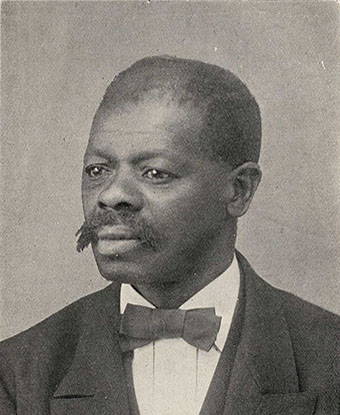Last updated: February 1, 2024
Person
Jacob Stroyer

University of Delaware Library, Special Collections
Jacob Stroyer was born into slavery on the Singleton plantation near Columbia, South Carolina in 1849 and lived there until 1863. His father had been taken from Sierra Leone and enslaved when he was just a boy. His mother was born in bondage in South Carolina. As a child, Stroyer helped care for the plantation's horses and mules, which were sold soon after his enslaver's death. He then worked briefly in a carpenter's shop and as a field hand.
During the Civil War, he was sent to Sullivan's Island and Fort Sumter in Charleston Harbor. According to Stroyer, older enslaved men were “to repair forts, build batteries, mount guns, and arrange them. While the men were engaged at such work, the boys of my age, namely, thirteen, and some older, waited on officers and carried water for the men at work, and in general acted as messengers between different points on the island.” Stroyer, in his 1879 memoir My Life in the South, described his time at Sullivan’s Island in Confederate service as easier than being on the plantation. However, in 1864 he experienced far harder duty at Fort Sumter.
Stroyer, along with over three hundred other enslaved men, were assigned to Fort Sumter and conveyed there by rowboat from John’s Island. One young slave from Stroyer’s plantation died before even entering the fort, struck by a Parrott shell. The enslaved people faced great danger from Union artillery fire while repairing Fort Sumter. Stroyer estimated that the “mortar and Parrott shells rained alternately upon Fort Sumter every five minutes.” Based on casualty lists compiled from the official records, more than 20 enslaved people died while forcibly working on the fort. Stroyer’s memoir details several incidences of death.
How did the Confederates keep these enslaved laborers at work in such dangerous conditions? Stroyer provides the answer in his description of Deburgh, the overseer. Stroyer wrote:
"God only knows how many negroes he killed in Port (sic) Sumter under the shadow of night. Every one he reached, while forcing the slaves back into working position after they had been scattered by the shells, he would strike on the head with the piece of iron he carried in his hand, and, as his victim fell, would cry out to some other negro, 'Put that fellow in his box,' meaning his coffin."
In July 1864, Stroyer suffered a wound to his head at Fort Sumter when a mortar shell came down on his shelter. Transported to a hospital for treatment, he never returned to the fort; instead, he returned to the plantation. In 1865, he was freed when Union General William T. Sherman captured Columbia, South Carolina.
Following his release from slavery, Jacob Stroyer attended schools in Columbia and Charleston. He moved to Worcester Massachusetts in 1870, attending Worcester Academy for two years. He later settled in Salem, Massachusetts, and became minister of the African Methodist Episcopal Church there.
